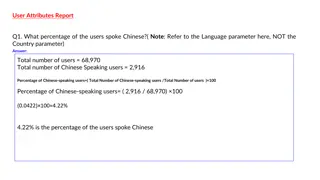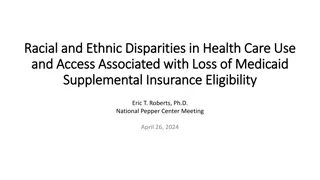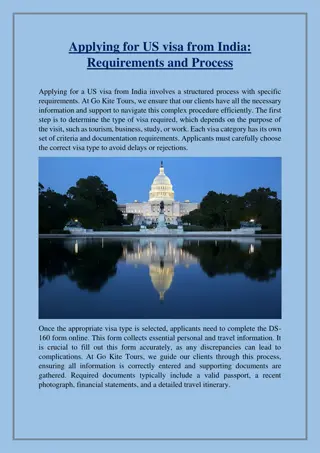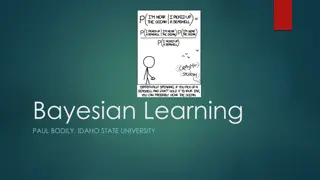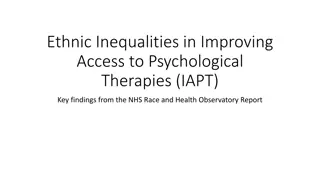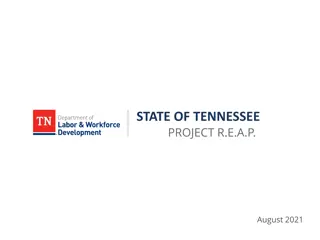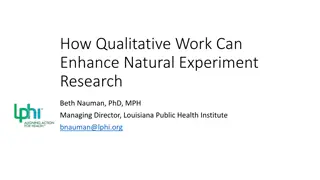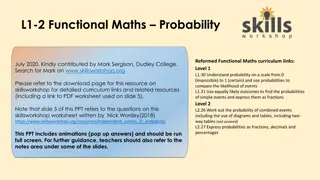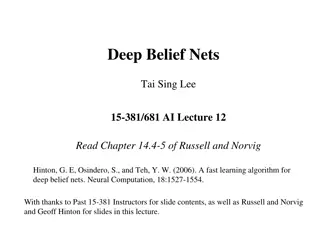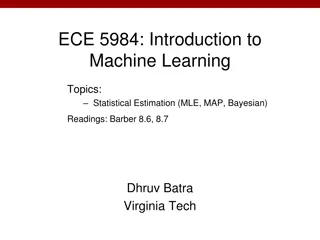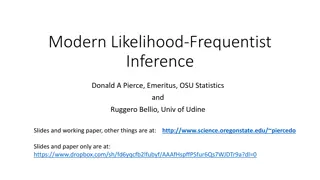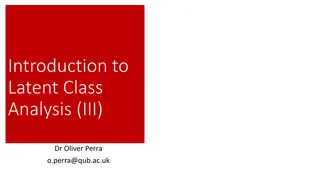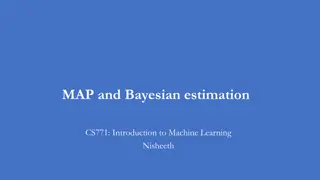Protection Motivation
Protection Motivation Theory (PMT) explores how individuals respond to health threats, either adaptively or maladaptively. By assessing threats and coping mechanisms, people may engage in behaviors to protect themselves. PMT emphasizes the appraisal of threat severity, likelihood, response efficacy,
4 views • 9 slides
The Semantic Argument for the Existence of God - International Conference Insights
Explore the Semantic Argument and its implications for the existence of God as presented by Emanuel Rutten at the International Proofs of God's Existence Conference. The lecture delves into universal properties, formal versus non-formal properties, and the likelihood of God's existence based on thes
0 views • 14 slides
Insights into Adventist Youth Ministries and Retention Factors
The content covers various aspects of Adventist Youth Ministries, including the Ambassador program for the 16-21 age group. It delves into the likelihood of different age groups leaving the church, reasons for church members leaving, responses to individuals who stop attending church, and insights f
0 views • 26 slides
Breathe 1-Month Survey 2021-2023 Head Start Responses Analysis
This report analyzes responses from the Breathe 1-Month Survey 2021-2023 in the Head Start program. It covers the roles of participants, frequency of material usage, usefulness of materials in tobacco education, and future likelihood of material use. Insights into the engagement and perceptions of t
0 views • 5 slides
Insights from Breathe Training Survey on Tobacco Education Usage
Survey responses from alternate partners involved in the Breathe 1-Month Survey from 2021-2023 provide valuable insights on the frequency of material use, perceived usefulness of materials for tobacco education, and future likelihood of material utilization. Key roles identified include Health Manag
3 views • 5 slides
Active Tuberculosis Drug Safety Monitoring and Management Training Package 2023
This training package focuses on the safety monitoring and management of active tuberculosis drugs, specifically emphasizing causality assessment in determining adverse reactions. Participants will learn about assessing the likelihood of TB medicines causing adverse events, attributing relationships
3 views • 17 slides
Understanding Market Risk and Risk Management Techniques
Market risk arises from adverse price movements in the market that can lead to financial losses for organizations. Techniques such as standard deviation, Value at Risk (VAR), and Stress Testing are used to measure and manage market risk effectively. VAR helps quantify potential losses and their like
7 views • 12 slides
Introduction to Probability Concepts in CSE 312 Spring 24 Lecture 5
Today's lecture in CSE 312 Spring 24 covers the basics of probability, including sample spaces, events, and probability calculations. Understand the foundational processes behind quantifying uncertainty, such as flipping coins, rolling dice, and shuffling cards. Dive into concepts like sample spaces
2 views • 26 slides
User Attributes and Engagement Reports Analysis
The analysis covers various aspects such as the percentage of Chinese-speaking users, the top interest among active users, the highest average engagement time, the impact of user engagement time on conversion likelihood, and the top acquisition channels. It also compares Organic Social and Organic S
3 views • 16 slides
Understanding Extreme Value Theory in Civil Engineering
Introduction to Extreme Value Theory (EVT) in civil engineering focusing on the analysis of extremes such as shear strength, slope stability, and load factors. The theory, exemplified by Emil Julius Gumbel, questions the likelihood of individual observations falling outside expected distributions. E
10 views • 49 slides
What makes obtaining a Short Term Cash Loans with a poor credit history challenging
Lenders typically use credit files and ratings to determine the risk of their short term cash loans. In the end, the lender must guarantee the greatest likelihood of the borrower making timely repayments.
8 views • 1 slides
Understanding Conditional Probability and Bayes Theorem
Conditional probability relates the likelihood of an event to the occurrence of another event. Theorems such as the Multiplication Theorem and Bayes Theorem provide a framework to calculate probabilities based on prior information. Conditional probability is used to analyze scenarios like the relati
1 views • 5 slides
Understanding Racial and Ethnic Disparities in Health Care Utilization and Access
This presentation explores disparities in health care access among Medicare beneficiaries, focusing on the impact of loss of Medicaid and supplemental insurance eligibility. It discusses the challenges faced by Black and Hispanic individuals above the Medicaid cutoff, their lower likelihood of havin
1 views • 12 slides
US visa
Obtaining a US visa is a crucial step for individuals planning to travel or work in the United States. It is essential to familiarize oneself with the specific visa types available, such as tourist, work, or student visas, depending on the purpose of the visit. Each visa category has its own set of
2 views • 2 slides
Maximizing Your Potential with Placement Services in Dubai in 2024
It might be hard to get an occupation in an atmosphere of competition like Dubai, but using service for placement can greatly improve your likelihood of landing an excellent spot.
0 views • 4 slides
Understanding Bayesian Learning in Machine Learning
Bayesian learning is a powerful approach in machine learning that involves combining data likelihood with prior knowledge to make decisions. It includes Bayesian classification, where the posterior probability of an output class given input data is calculated using Bayes Rule. Understanding Bayesian
0 views • 17 slides
Diversity and Inclusion Insights in Workforce Data 2024
Explore the Workforce Race Equality Standard (WRES) and Workforce Disability Equality Standard (WDES) data for May 2024. The data provides insights into workforce diversity, representation, likelihood of appointments, disciplinary processes, training access, harassment experiences, and more, with a
2 views • 14 slides
Addressing Ethnic Inequalities in Access to Psychological Therapies: Insights from NHS Race and Health Observatory Report
NHS England's efforts to advance equality in healthcare services recognize the disparities faced by minoritised ethnic groups, particularly in accessing psychological therapies. Recent findings indicate that individuals from these groups experience worse outcomes, longer wait times for assessment an
0 views • 5 slides
Understanding Probability Rules and Models
Probability rules and models explain how to calculate the likelihood of different outcomes in a chance process by utilizing sample spaces, probability models, events, and basic rules of probability. Learn about the importance of sample space, probability models, calculating probabilities, mutually e
0 views • 17 slides
Addressing Recidivism through Project R.E.A.P. in Tennessee
Statistics in Tennessee show a high rate of recidivism among offenders, highlighting the need for effective re-entry programs. Project R.E.A.P. focuses on providing education, training, and post-release support to reduce the likelihood of re-arrest and incarceration. The program offers resources lik
0 views • 9 slides
Comprehensive Overview of Morse Fall Scale and Its Application in Preventing Falls
Falls among hospitalized patients pose a significant risk, with 30-50% resulting in injuries. The Morse Fall Scale (MFS) is a widely used method to assess fall risk, comprising six variables with predictive validity. Factors such as history of falling, ambulatory aids, gait, and mental status are cr
0 views • 13 slides
Binary Logistic Regression with SPSS – A Comprehensive Guide by Karl L. Wuensch
Explore the world of Binary Logistic Regression with SPSS through an instructional document provided by Karl L. Wuensch of East Carolina University. Understand when to use this regression model, its applications in research involving dichotomous variables, and the iterative maximum likelihood proced
0 views • 87 slides
Understanding Sex-Linked Inheritance: Key Concepts and Examples
Sex-linked inheritance refers to the transmission of genetic traits determined by genes located on the sex chromosomes. This type of inheritance differs from autosomal inheritance due to the unique characteristics of the X and Y chromosomes. In organisms with XX/XY sex determination, genes on the X
1 views • 21 slides
Enhancing Natural Experiment Research Through Qualitative Work
Qualitative research plays a crucial role in enhancing natural experiment studies by providing insights into the processes of exposure to interventions, identifying variables influencing exposure likelihood, and determining suitable control groups. Complementary methods within the RE-AIM framework a
0 views • 13 slides
COVID-19 Overview: Guam Department of Public Health
COVID-19, caused by the SARS-CoV-2 virus, is a rapidly evolving situation. Information and guidance provided may be outdated. Coronaviruses can spread between animals and humans. Planning considerations for Guam include the likelihood of spread, high-risk populations, healthcare facility risks, PPE
0 views • 5 slides
Understanding Modal Verbs: Epistemic and Deontic Uses
Modal verbs, such as can, could, may, must, will, and should, play a crucial role in expressing modality in English. This content discusses the epistemic and deontic uses of modal verbs, illustrating how they convey likelihood, ability, permission, suggestions, obligations, and advice. Explore the n
0 views • 34 slides
Understanding Probability and Calculating Probabilities with Z-Scores
Probability is a number between zero and one that indicates the likelihood of an event occurring due to chance factors alone. This content covers the concept of probability, the calculation of probabilities using z-scores, and practical examples related to probability in statistics. You will learn a
0 views • 12 slides
Understanding Maximum Likelihood Estimation
Dive into the concept of Maximum Likelihood Estimation, where we estimate parameters based on observed outcomes in experiments. Learn how to calculate likelihoods and choose the most probable set of rules to maximize event occurrences.
5 views • 24 slides
Understanding Probability Theory: Basics and Applications
Probability theory is a branch of mathematics that deals with the likelihood of different outcomes in random phenomena. It involves concepts such as sample space, probability distributions, and random variables to determine the chance of events occurring. The theory utilizes theoretical and experime
0 views • 11 slides
Understanding Probability in Functional Maths Curriculum
Explore probability concepts in functional maths, such as understanding probability scales, comparing likelihood of events, calculating probabilities of simple and combined events, and expressing probabilities as fractions, decimals, and percentages. Practice drawing probability lines, simplifying f
0 views • 8 slides
Introduction to Deep Belief Nets and Probabilistic Inference Methods
Explore the concepts of deep belief nets and probabilistic inference methods through lecture slides covering topics such as rejection sampling, likelihood weighting, posterior probability estimation, and the influence of evidence variables on sampling distributions. Understand how evidence affects t
0 views • 47 slides
Understanding Point Estimation and Maximum Likelihood in Statistics
This collection of images and text delves into various topics in statistics essential for engineers, such as point estimation, unbiased estimators, maximum likelihood, and estimating parameters from different probability distributions. Concepts like estimating from Uniform samples, choosing between
0 views • 16 slides
Understanding Maximum Likelihood Estimation
Estimation methods play a crucial role in statistical modeling. Maximum Likelihood Estimation (MLE) is a powerful technique invented by Fisher in 1922 for estimating unknown model parameters. This session explores how MLE works, its applications in different scenarios like genetic analysis, and prac
0 views • 27 slides
Introduction to Statistical Estimation in Machine Learning
Explore the fundamental concepts of statistical estimation in machine learning, including Maximum Likelihood Estimation (MLE), Maximum A Posteriori (MAP), and Bayesian estimation. Learn about key topics such as probabilities, interpreting probabilities from different perspectives, marginal distribut
0 views • 23 slides
Understanding Likelihood Weighting in Sampling
When using likelihood weighting for sampling, multiplying the fraction of counts by the weight results in a specific distribution. Likelihood weighting may fail in scenarios with high complexities, prompting the need for alternative algorithms like resampling. This technique involves eliminating unf
0 views • 27 slides
Understanding Maximum Likelihood Estimation in Physics
Maximum likelihood estimation (MLE) is a powerful statistical method used in nuclear, particle, and astro physics to derive estimators for parameters by maximizing the likelihood function. MLE is versatile and can be used in various problems, although it can be computationally intensive. MLE estimat
0 views • 22 slides
Maximum Likelihood Estimation in Statistics
In the field of statistics, Maximum Likelihood Estimation (MLE) is a crucial method for estimating the parameters of a statistical model. The process involves finding the values of parameters that maximize the likelihood function based on observed data. This summary covers the concept of MLE, how to
0 views • 19 slides
Modern Likelihood-Frequentist Inference: A Brief Overview
The presentation by Donald A. Pierce and Ruggero Bellio delves into Modern Likelihood-Frequentist Inference, discussing its significance as an advancement in statistical theory and methods. They highlight the shift towards likelihood and sufficiency, complementing Neyman-Pearson theory. The talk cov
0 views • 22 slides
Understanding Latent Class Analysis: Estimation and Model Optimization
Latent Class Analysis (LCA) is a person-centered approach where individuals are assigned to different categories based on observed behaviors related to underlying categorical differences. The estimation problem in LCA involves estimating unobservable parameters using maximum likelihood approaches li
0 views • 30 slides
Understanding Maximum Likelihood Estimation in Machine Learning
In the realm of machine learning, Maximum Likelihood Estimation (MLE) plays a crucial role in estimating parameters by maximizing the likelihood of observed data. This process involves optimizing log-likelihood functions for better numerical stability and efficiency. MLE aims to find parameters that
0 views • 18 slides








